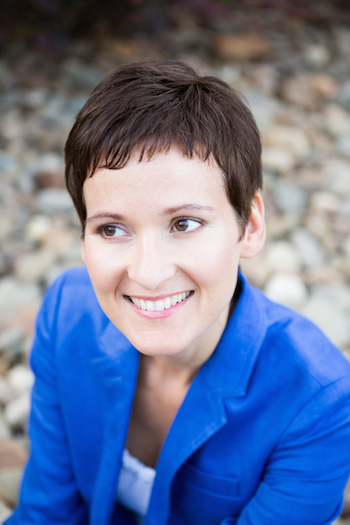Why Every Expectant Mom Needs Yoga
This post was written by H&W instructor Ginger Garner, MPT, ATC, PYT. Ginger will be instructing the course that she wrote on "Yoga as Medicine for Pregnancy" in New York this November.

Pregnancy brings the most enormous changes in a woman’s life, and is arguably the most profound change that the body can experience.
It is no secret that America claims the most shameful maternal health and birth outcomes in the developed world. For more information, read my previous post on American Childbirth: A Human Rights Failure? However, physical therapy can have quite a bit to do with turning those statistics around. Informing mothers about their right to access physical therapy can help improve birth statistics by improving a mother’s health and well-being, not just treating a case of pregnancy-associated low back pain or sciatica.
But it takes more than exercise to influence a mother’s overall well-being and to give her a sense of empowerment. It takes mindfulness.
Yoga is an ancient mind-body practice that supplies both the exercise and mindfulness component. A recent systematic review agrees that “mind-body practices cultivate general health, diminish stress, and increase overall body awareness,” variables that are incredibly important to improve mom and baby’s health.
What are the specific benefits that yoga can infer to expectant moms?
The study reports that although more RCT’s are necessary (aren’t they always?), yoga may improve a mother’s “stress levels, quality of life, aspects of interpersonal relating, autonomic nervous system functioning, and labour parameters such as comfort, pain, and duration.”
A 40-year systematic review also published in 2012, came to similar conclusions. In RCT’s and nonrandomized trials, a “significant reduction in preterm labor, intrauterine growth retardation, low birth weight, pregnancy discomforts, and perceived sleep disturbances” were found in moms that practiced yoga during pregnancy. Additionally, yoga was also reported to lower perceived pain, discomfort, lower stress, and improve quality of life in physical domains.
These reviews underscore the importance of doing not just more research on yoga during pregnancy, but yoga applied through the lens of physical therapy intervention. Yoga applied via physical therapy can be even more efficacious.
Yoga, using the familiar clinical tools we already know in physical therapy, make integrated physical therapy practice readily accessible and immediately applicable for mothers. Ginger’s new course, Yoga as Medicine for Pregnancy, teaches yoga from the physical therapy evidence-based practice perspective. Yoga can be comfortably and easily used in physical therapy to affect not just a mother’s fitness, but her overall well-being and health, which can be a major factor in helping improve birth outcomes for every mother and child.
Since, according to a systematic review by Curtis et al in 2012, 35% of women aged 28-33 years of age already practice yoga, it makes sense for physical therapists to be in the know about how yoga can be best used clinically. Having physical therapists regularly using yoga in their practice could save moms time, lower the burden of healthcare costs, and more readily improve overall all-health outcomes. Those are statistics that we would all like to see for birth in America.
To learn more about Ginger’s course, visit Yoga as Medicine for Pregnancy
By accepting you will be accessing a service provided by a third-party external to https://hermanwallace.com./








































